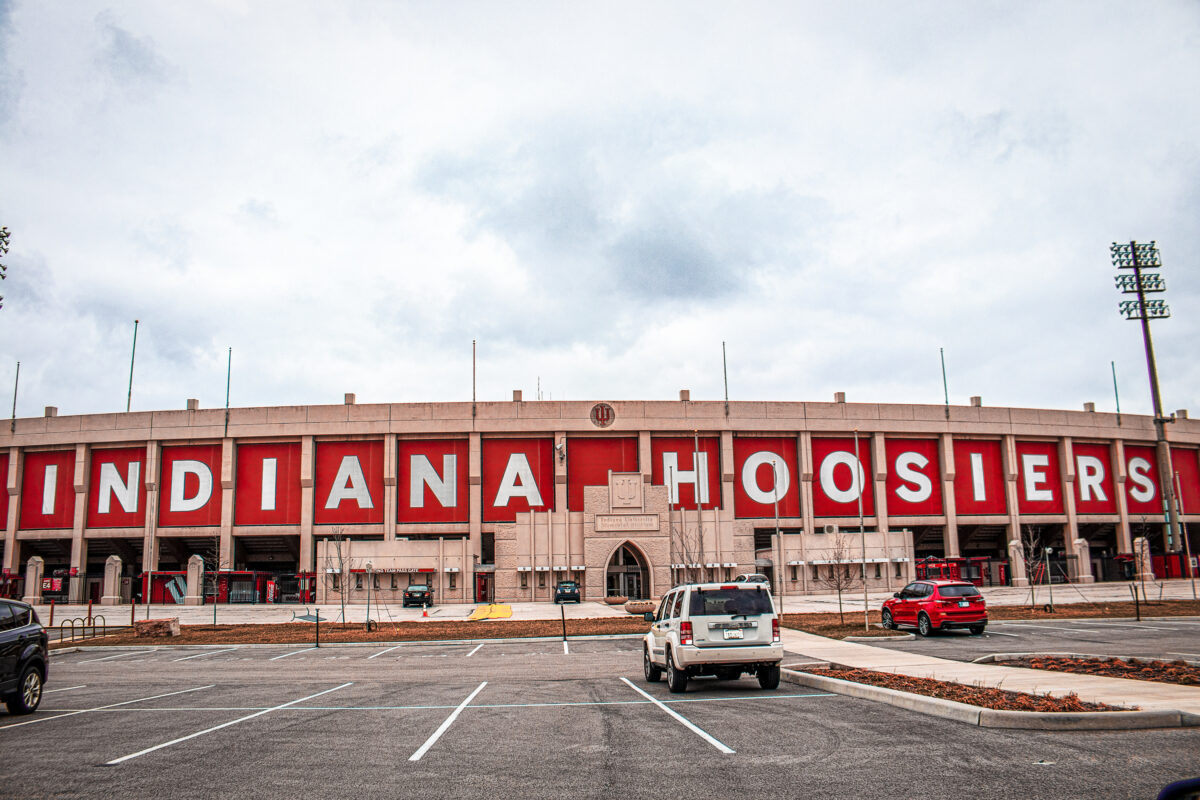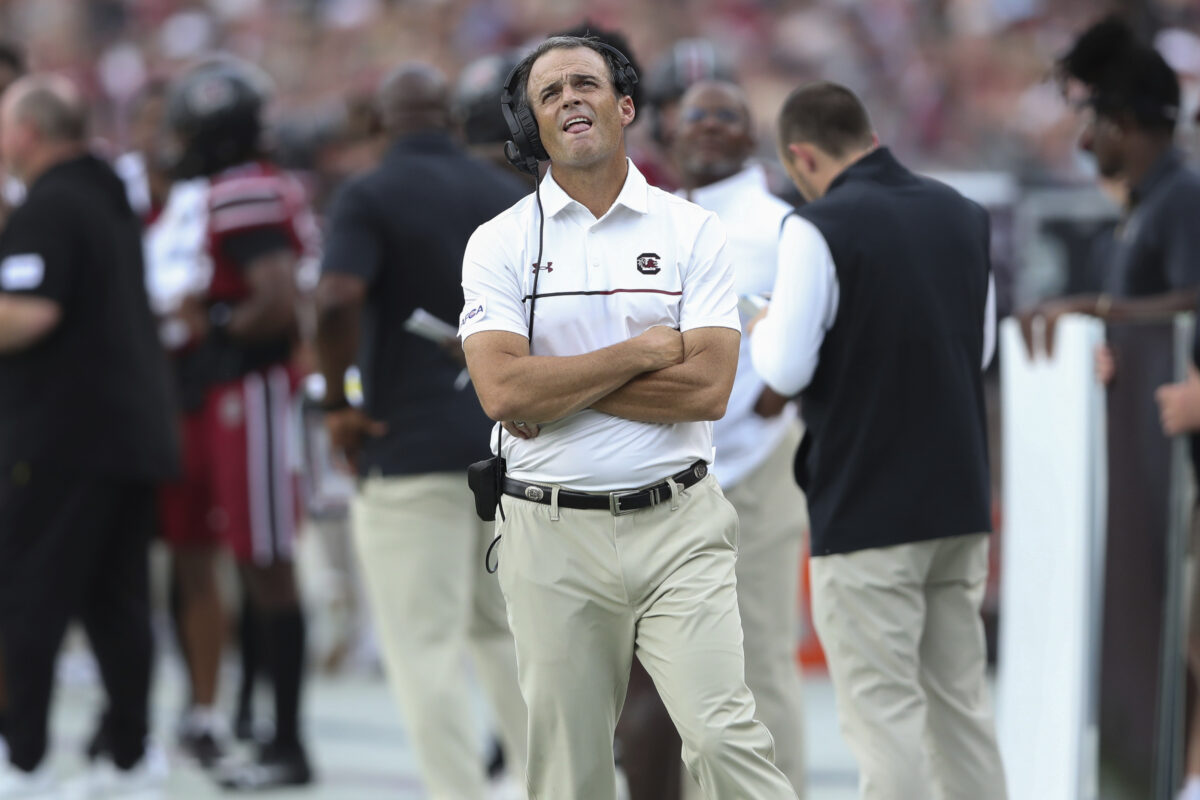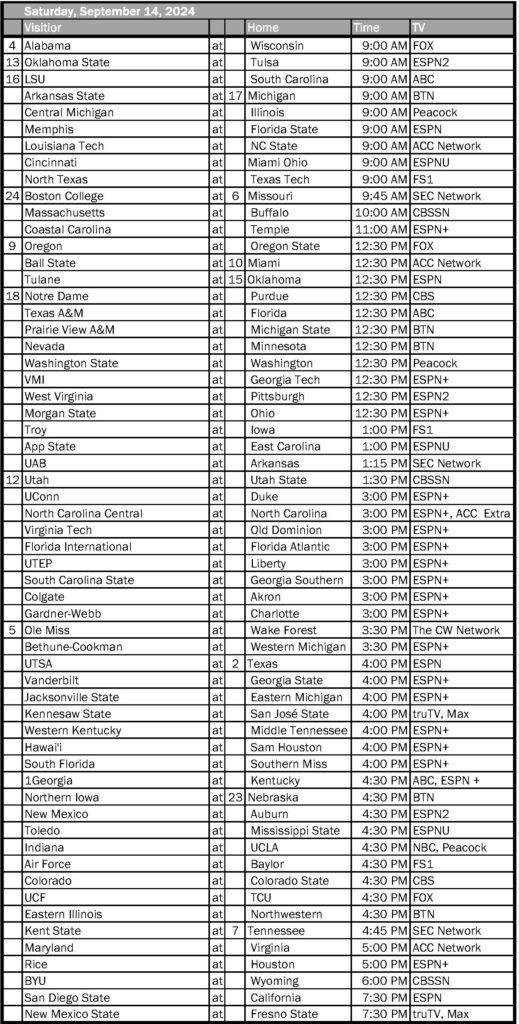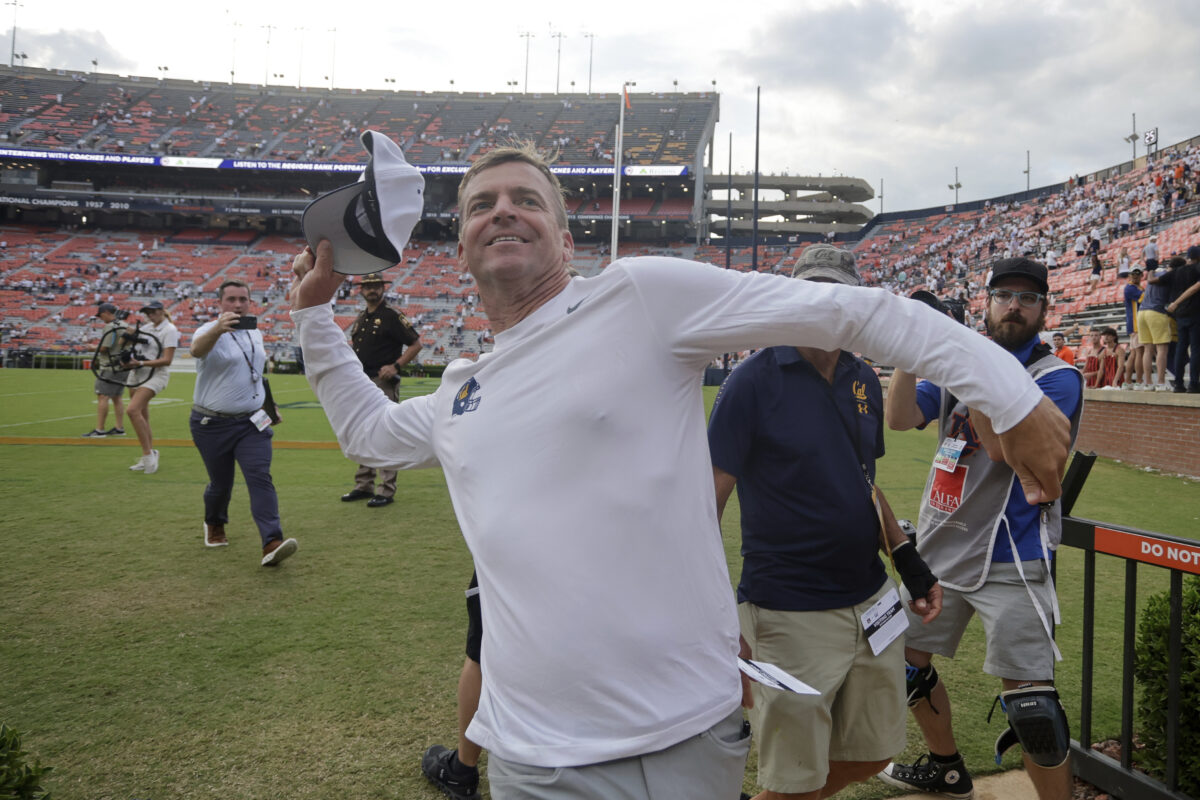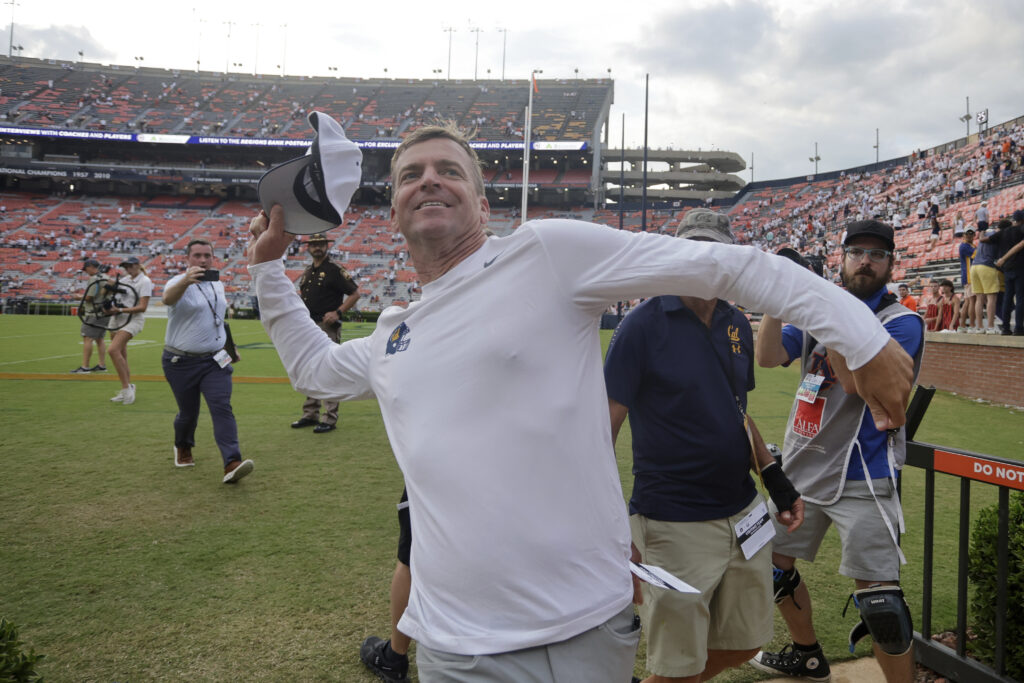Blog Article
Indiana Football 2025 Season Preview: Building on History
Indiana football is about to find out if lightning can strike twice.
The Hoosiers enter 2025 carrying unprecedented momentum following the most successful campaign in program history. Under second-year head coach Curt Cignetti, they must prove that their remarkable 2024 breakthrough was not a fluke but the foundation of a sustainable championship culture.
The Historic 2024 Foundation Changed Everything
The numbers from Indiana’s 2024 season tell a story of complete transformation.
Cignetti’s first season produced an 11-2 overall record and an 8-1 mark in Big Ten play, both program records. The Hoosiers reached the College Football Playoff for the first time, ultimately falling to Notre Dame 27-17 in the first round.
The statistical dominance was overwhelming:
- Indiana averaged 41.3 points per game while allowing just 15.6
- They outgained opponents by nearly 170 yards per contest
- The Hoosiers finished No. 10 in both the AP and Coaches polls
- This marked their highest ranking since 1967
Perhaps most importantly, Cignetti established a culture of excellence that attracted national attention. As he reflected on the season, “That’s probably the silver lining of the Notre Dame game is a sour taste it left in my mouth and everybody else’s mouth in terms of motivation to get started this year,” Cignetti told ESPN.
The Weak Schedule Criticism Was Valid (But 2025 Fixes That)
The most persistent criticism of Indiana’s 2024 success centered on one glaring weakness: the strength of schedule.
With an ESPN FPI strength of schedule ranked 100th nationally, Indiana faced legitimate questions about their readiness for elite competition. The nonconference slate was particularly problematic:
- Florida International
- Western Illinois (an FCS team)
- Charlotte
Those criticisms were validated when Indiana struggled against top-tier opponents, losing 38-15 to Ohio State and 27-17 to Notre Dame. However, the 2025 schedule represents a dramatic upgrade that should silence critics.
ESPN’s 2025 strength of schedule ratings place Indiana at No. 32 nationally. This is a significant jump that puts them solidly in the upper quarter of all FBS teams for schedule difficulty. The road games alone tell the story:
- At Oregon (2024 Big Ten Championship participant)
- At Penn State (2024 Big Ten Championship participant)
- At Iowa (traditionally a difficult environment)
Additional challenging home matchups against Wisconsin, Illinois, and UCLA create a gauntlet that will test Indiana’s depth and development.
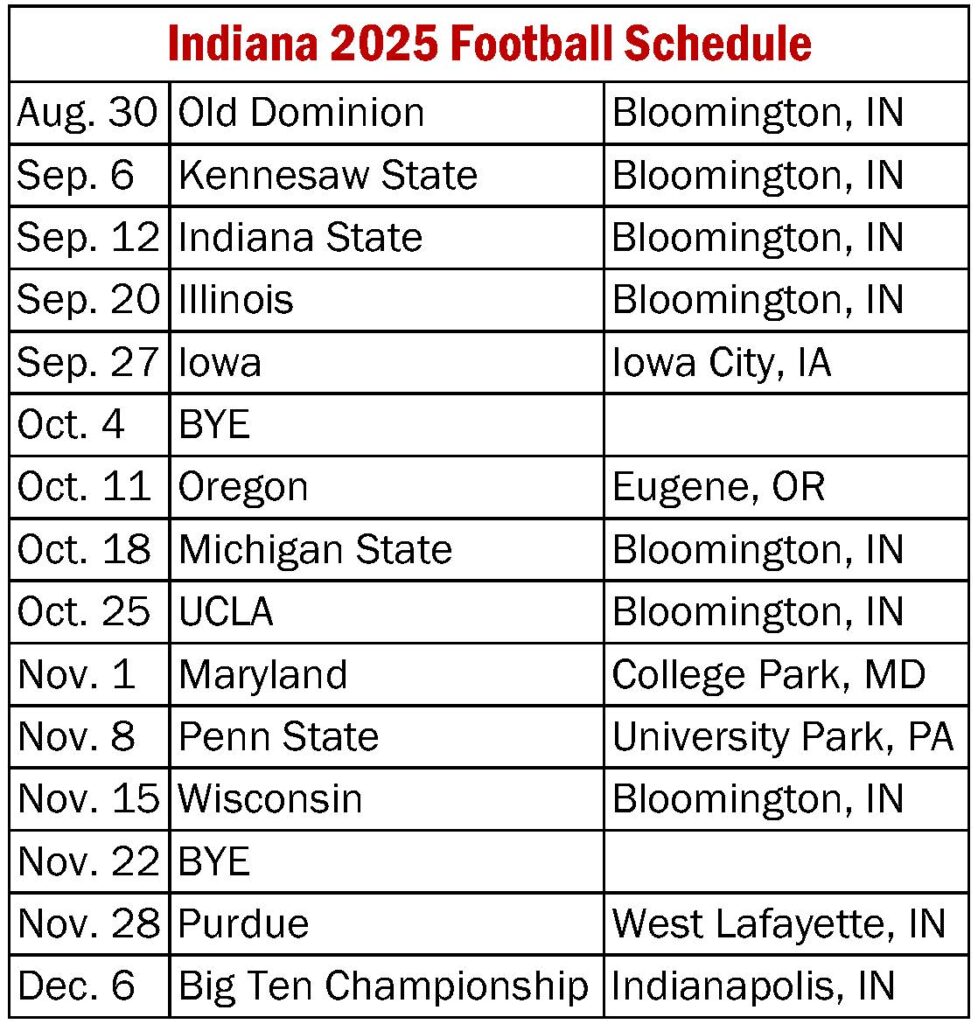
The Quarterback Question Got the Perfect Answer
The most crucial offseason addition came at quarterback, where Indiana landed Fernando Mendoza from California.
The 6-foot-5, 225-pound redshirt sophomore was one of the most coveted quarterbacks available in the transfer portal and committed to the Hoosiers in December, according to ESPN. His 2024 statistics at Cal were impressive:
- 3,004 passing yards
- 16 touchdowns
- Just six interceptions
- 68.7% completion rate
His younger brother Alberto, already on the Indiana roster, played a role in the recruitment. “His younger brother, Alberto Mendoza, is a freshman backup quarterback for the Hoosiers, a connection that proved to be a key factor as Fernando Mendoza decided whether to transfer ahead of his junior season,” ESPN reported.
The quarterback addition addresses one of the biggest concerns following Kurtis Rourke’s departure. Rourke threw for 3,042 yards and 29 touchdowns in 2024, earning second-team All-Big Ten honors and finishing ninth in Heisman Trophy voting.
The Offensive Line Got a Complete Makeover
Perhaps no position group received more attention in the offseason than the offensive line, which struggled against elite competition in 2024.
The numbers were brutal. “One area that hurt Mendoza at Cal last season collides with the Indiana weakness that got exposed in the Hoosiers’ biggest games, as they had a 13% sack rate against Ohio State, Notre Dame and Michigan last year, per ESPN Analytics, compared to 3% against the rest of their schedule,” according to ESPN analysis.
Indiana aggressively addressed this weakness by adding three experienced Power 4 transfers:
- Kahlil Benson from Colorado
- Pat Coogan from Notre Dame
- Zen Michalski from Ohio State
Combined with returning starters Carter Smith, Bray Lynch, and Drew Evans, Indiana now boasts six older and experienced linemen. This should be the team’s most improved unit in 2025.
The Defense Keeps Its Championship Core
While the offense underwent significant changes, the defense retains its core leadership.
All-American cornerback D’Angelo Ponds returns after recording three interceptions and nine pass breakups in 2024. Two other defensive anchors also return:
- Linebacker Aiden Fisher (team-leading 118 tackles)
- Defensive end Mikail Kamara (10 sacks, 15 tackles for loss)
The defensive continuity provides stability as Indiana integrates new offensive pieces. Defensive coordinator Bryant Haines and the defensive system that ranked sixth nationally in scoring defense remain intact.
This Schedule Will Test Everything
Indiana’s 2025 schedule presents a legitimate test of its championship aspirations.
The season opens favorably with three home games against Old Dominion, Kennesaw State, and Indiana State. “The season opener at home against Old Dominion on Aug. 30 is set for a 2:30 p.m. kickoff, with Week 2 against Kennesaw State kicking off at noon. Both games will be televised on FS1,” according to On3.
The real challenges begin with Big Ten play. Road trips to Oregon and Penn State represent the most difficult tests, as both teams were in the 2024 Big Ten Championship game. Additional road games at Iowa and Maryland, plus home contests against Wisconsin, Illinois, and UCLA, create a gauntlet that will test Indiana’s depth and development.
This is not the 2024 schedule that critics attacked for being weak.
The Contract Extension Shows Total Commitment
Indiana’s commitment to Cignetti’s vision became crystal clear with a massive contract extension signed in November 2024.
“Cignetti and the Hoosiers agreed to an eight-year contract worth $8 million annually, the program announced in a press release Saturday morning. The deal runs through Nov. 30, 2032, and comes with an annual $1 million retention bonus,” according to the Indiana Daily Student.
The financial commitment is staggering:
- $72 million total over eight years
- $11 million staff salary pool (projects to be top five nationally)
- Significant buyout protection for both sides
“Indiana is spending accordingly, giving Cignetti a new deal for $72 million over eight years, and it now has an $11 million staff salary pool. (The pool projects to be top five in the country),” ESPN reported.
Transfer Portal Success Continues
Cignetti’s ability to rebuild through the transfer portal remains a key strength for the program.
Indiana’s 2025 transfer class ranks 18th nationally according to 247Sports, with 19 additions:
- 10 on offense
- 6 on defense
- 3 specialists
Beyond Mendoza, key additions include running back Roman Hemby from Maryland, who brings 2,347 career yards and 22 touchdowns. The offensive line additions of Benson, Coogan, and Michalski represent experienced players from major programs who should immediately improve depth and competition.
The Expectations Are Sky High (And Realistic)
“We don’t want to be a one-hit wonder” became an unofficial motto as ESPN reported on rising expectations.
The 2025 season will determine whether Indiana can sustain elite-level performance or if 2024 was an anomaly. ESPN’s preseason rankings place Indiana at No. 17 in their “Way-Too-Early Top 25,” reflecting both respect for the program’s rise and skepticism about repeating unprecedented success.
This would mark Indiana’s first preseason AP Top 25 appearance since 2021. The schedule upgrade provides an opportunity for legitimacy:
- Success against Oregon, Penn State, and other ranked opponents would validate Indiana’s place among college football’s elite
- Struggles could reinforce perceptions that 2024 was built on a favorable schedule
Cignetti’s Track Record Suggests Optimism
The man leading this transformation has never failed before.
“We’re going to change the culture, the mindset, the expectation level and improve the brand of Indiana Hoosier football,” Cignetti said during his introductory press conference in December 2023, according to the Indiana Daily Student. “There will be no self-imposed limitations on what we can accomplish.”
His famous “Google me” confidence reflects a coach who has never had a losing season in 14 years as a head coach. The culture change is evident in recruiting, fan support, and national perception.
“When we played the real good people,” Cignetti acknowledged regarding 2024 losses, “we looked a little different.” The 2025 schedule provides ample opportunity to demonstrate growth against elite competition.
This Is the Ultimate Test
The 2025 season marks a pivotal moment for Indiana football.
Success would establish the program as a legitimate Big Ten power and national contender. Struggles could suggest that 2024 was an outlier rather than a sustainable foundation.
The infrastructure for sustained success appears to be in place:
- Contract extension providing stability
- Increased funding
- Recruiting momentum
- Coaching continuity
- Transfer portal additions addressing specific 2024 weaknesses
Indiana enters 2025 with unprecedented expectations and resources. The question is not whether the Hoosiers can compete but whether they can sustain excellence when the novelty wears off and opponents treat them as a legitimate threat rather than a surprising story.
The answer will determine whether Cignetti’s transformation represents a temporary breakthrough or the beginning of a new era in Bloomington.
The Next Billion Dollar Game
College football isn’t just a sport anymore—it’s a high-stakes market where information asymmetry separates winners from losers. While the average fan sees only what happens between the sidelines, real insiders trade on the hidden dynamics reshaping programs from the inside out.
Our team has embedded with the power brokers who run this game. From the coaching carousel to NIL deals to transfer portal strategies, we’ve mapped the entire ecosystem with the kind of obsessive detail that would make a hedge fund analyst blush.
Why subscribe? Because in markets this inefficient, information creates alpha. Our subscribers knew which coaches were dead men walking months before the mainstream media caught on. They understood which programs were quietly transforming their recruiting apparatuses while competitors slept.
The smart money is already positioning for 2025. Are you?
Click below—it’s free—and join the small group of people who understand the real value of college football’s new economy.
